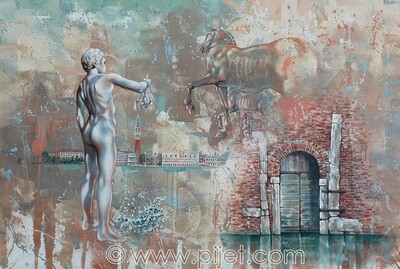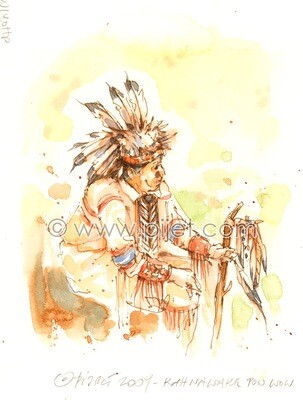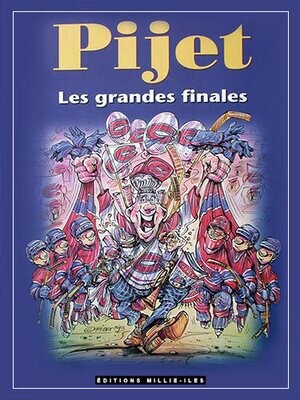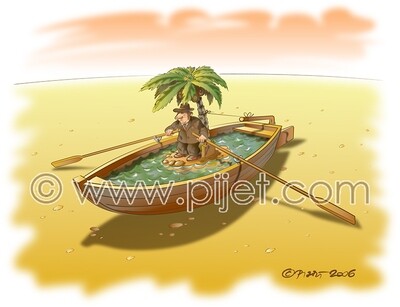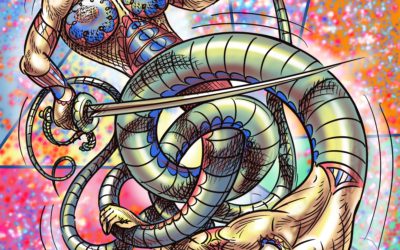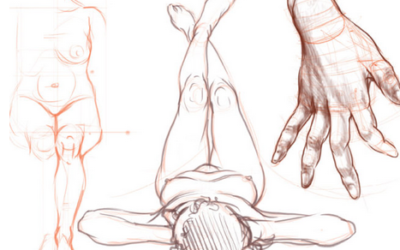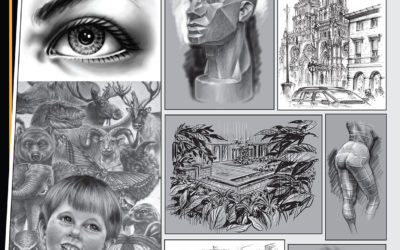Robert Rauschenberg’s Cardboards as an extension of Dadaist’s Practice.
Before the cardboard inspired Robert Rauschenberg’s creative senses to use it as a leading medium for his artistic explorations, the material itself had its own creative past. The history of cardboard as an utilitarian product is closely related to the industrialization of Western cultures at the beginning of nineteenth century. The real professional name of the especially composed paper[1] design is corrugated fiberboard.[2] Its initial purpose was to protect diverse products related to the industrial commodities during their transport and not to create artistic objects with it. At the end of nineteenth and at the beginning of twentieth century the products based on the corrugated board were largely adopted in most commercial storages or transportation activities. The global commercial development and closely related to it necessity to transport various goods stimulated the relatively constant growth of the packaging industry. In order to satisfy the increasing demands for more sophisticated and durable transportation materials the corrugated board was submitted to various modifications in order to satisfy the market expectations. The cardboard’s particular association with the industrial activities symbolically relates it to the imperialist socio-political exploitation and as such echoes its contemporary realities. The practices associated to the use and reuse of cardboard packaging materials reflected the capitalist social context of it. In consequence various artists were using it to project their own image of the modern industrial times and Picasso[3] besides Braque[4] and Gris[5] might be added to the list of the first examples of such intentions. Picasso in his Cubist collages[6] combined pieces of cardboards with paint and other objects on the canvas (see fig. 9). Sometimes he created entire compositions from cardboard as for example the Maquette for Guitar,[7] which was done entirely from paper and rope (see fig. 8). The Dada[8] movement employed cardboards for construction of decorations, masks, and costumes for their Avant-garde performances. Kurt Schwitters,[9] one of the most interesting Dada artists, used cardboards in his various artistic explorations. The use of corrugated boards for other than packaging purposes has continued in the works of many artists since. The specific qualities of the cardboard as an industrial product made it omnipresent in contemporary human activities. During the late sixties when the socio-political protests spread across Europe against the governmental imperialist politics and its corrupted system of art institutions, the artists begun to contest the existed pattern of conventions imposed on the art market by the corporate powers. Before Rauschenberg used the corrugated paper for his various cardboards series the Italian art critic Germano Celant[10] wrote his Arte Povera manifesto and organized its first two expositions. The Italian artists took the opposite direction in comparison to the American artistic trend of sixties. They were looking for unconventional materials of everyday, which would have connections with the nature and express the modern realities. They were searching for the ways to approach art closer to life by negating the conventional stereotypes of the artistic aesthetics. Furthermore, Arte Povera was against the old conservative traditions of conceiving an object of art. The Arte Povera movement promoted the total liberty in art conception including the unlimited variety of materials used for its execution.
Robert Rauschenberg admired the European art and was sympathetic to the Arte Povera initiatives. He followed its creative development from a distance. It is possible that few years later the Arte Povera concept sparked in Rauschenberg’s creative mind the idea to explore various possibilities offered by the corrugated paper to the broader extend. The use of paper related products was always present in Rauschenberg’s artistic evolution. However, his experiments with cardboards made him the first artist to be able to express the urban poetic catastrophic romanticism with the material related directly to the contemporary world of human consumption. The adoption of corrugated boards as a means of artistic expression contains an evidence of the artist’s political agenda. Through the application of cardboards as a symbol of Imperialist production and consumption Rauschenberg stated his artistic protest confirming his disillusion in human race and its values. This is especially visible in his Cardboards series where the purity of cardboard medium is enforced with the sublime lexicality of the imagery it projects.
At the beginning of the seventies Robert Rauschenberg moved from New York to Florida where he created a series of artworks completely different from anything he had tried earlier. He explored the new avenues incorporating in his creative venture a medium never used before by any artist to such extend as he did. He made few significant series of compositions using the cardboards packaging boxes as a principal material to express his ideas. He almost simultaneously worked on the Cardboards, Cardbirds, Tampa Clay Pieces, Bronze Cardboards, Venetian, and the Early Egyptian cycle of thematic artworks. The entire collection emanates with the Dadaist rebellious flavor. The Avant-garde aesthetics are omnipresent in the structural proprieties of the cardboard medium to which Rauschenberg imposed completely different role to play than the material’s initial purpose was.
The Rauschenberg’s Dadaist Avant-gardism is expressed the most in his Venetian and Early Egyptian series of cardboards compositions. These brilliant concepts, which were explored with the most unexpected materials, prove Rauschenberg’s force of intellectual irony emphasized by the ambiguity of the employed medium. By doing so he attempted to intellectualize the medium itself. The review of few chosen artworks from both series proves Rauschenberg’s method to apply the Dadaistic notion of anarchic irony in his conceptual pattern of conceiving the cardboard art.
Rauschenberg in the Venetian series shows his creative virtuosity, which needs to be deciphered in order to understand its intellectual content. Rauschenberg’s strangeness of the refine minimalism of his compositions is stunning. He plays with the space and time contained in the sublime vulgarity of the cardboards. Combining different components with the corrugated paper he completes its indexical narratives. Each object used in Rauschenberg’s compositions has its own meaning and the collection of all of them induces to its final understanding. In his Venetian cardboards he constructed a pictographic biography of Venice.[11] He coded the city’s architectural sites compressing their essence through the Avant-garde practice of his rebellious imagery. At the first glance on the Untitled (Venetian) cardboard composition (see fig. 1) from the formal point of view the viewer sees the forms constructed from the cardboard, canvas, and leather interacting with the flat surface of the white wall and the floor in front of us. However, Rauschenberg’s genie leads our deductive senses further and deeper into the total disclosure of artist’s intellectual quiz. In this particular cardboard composition Rauschenberg contextualized through the prism of his Dadaist ridiculous lenses and its minimalist symbolism the heart of Venice. He portrayed the Piazza San Marco together with the Torre dell’Orologio (see fig. 10). This place was and still is the principal place for the most important socio-political and cultural public manifestations in Venice. Since the very early beginning of the Venetian Republic, the Piazza San Marco has witnessed holiday gatherings, processions, executions, funerals, departures, celebrations, important historic visits, and many other significant to Venetians events. Rauschenberg in his depiction of the Piazza San Marco limits himself to the essence of this place’s historical past. Using the cardboard box he constructed a shape of the Torre dell’Orologio the Venice highest landmark and placed it horizontally making it emerging almost from the center of the stretched white canvas. He suggests an aerial view of the entire Piazza San Marco. In his perception of the depicted space he respects the architectural irregularity of the object itself. The Torre dell’Orologio in reality does not emerge from the center of the piazza’s central edge but it is placed very close to the corner of it. That is why in Rauschenberg’s composition the cardboard tower is not situated at the edge’s center of the canvas’s squared shape. Rauschenberg made his references even stronger by giving to the white surface of the canvas a floppy flexibility implying by it a symbolic connection to the image of maternity. The leather belt as the umbilical cord is attached to the center of the canvas in form of a belly and is dropping down connecting the aerial spaces of two surfaces. One is the wall as a reference to the past and the second is the floor referring to the present. This embryonic metaphor celebrates the birth of the new perception of the Venetian cultural heritage with Dadaist flavor. Rauschenberg symbolically refers to the time passage between the greatness of human achievements and its values to the present socio-political and cultural decay. The cardboard medium used by Rauschenberg emphasizes his statement even stronger. Rauschenberg in his ambivalent concept conveyed the birth of Venice to the Immaculate Conception. He compares the two miracles of human creativity: the first would be a dogmatic imaginary and unreal religious concept of Christianity; the second would be Venice itself, the bijou of the Adriatic Sea, a real still existing and appreciated by anyone who had the chance to visit it. Rauschenberg through intellectual nuances of his artwork compares the social structures of Venetian Republic with the image of socially disgraceful Imperialist actions of the Western world. The Venetian Republic’s social system was organized in great respect to every Venetian citizen. The poorest citizens of the Venetian Republic were better treated few hundreds years ago than the poorest citizens of the most advanced countries of the world today. The Venetian socio-political structure was an object of envy to many. The Venetian Republic independence lasted for few centuries until it was completely destroyed by the Napoleon’s Imperialistic hunger at the end of the eighteenth century. Rauschenberg, with his encoded silent intelligence, compares the Old World with the Modern through the allegorical depiction of the mixed materials with the cardboard medium, which symbolizes the disastrous effects of the uncontrolled Capitalism. Rauschenberg concludes his Untitled (Venetian) piece by combining the aerial view of Piazza San Marco with the shape of the turtle, a symbol of longevity, strength, and wisdom. Implying by it that the world has lot to learn from the Old Venetians.
In the second cardboard from the Untitled (Venetian) series (see fig. 2) Rauschenberg elaborates on the architectural concept of Venice. He exposes the viewer to more than one reading of his artwork. However, Rauschenberg always gives the indications how to follow the path of his intellectual crossword towards the final unity of his thoughts. The various fragments of the suspended on the wall cardboards suggest the variety of the facades of the Venetian homes situated along its canals (see fig.11) and refers to Venetian households infected by the Western world and its Capitalist pattern of the city economic development. The six different parts of the cardboards in sizes and shapes represent the six principal districts[12] of Venice: San Marco, Dorsoduro, Santa Croce, San Polo, Sestiere Castello, and Cannaregio. He starts his cardboard landscape parade from San Marco as the most important place in Venice. Rauschenberg distinguished the particularity of the place by different and much more elaborated form. He composed it from four parts. It starts with the industrial cleaning brush on the top of the larger cardboard from under which appears a smaller in size form with attached to it pendulum suspended on the cord to the floor. Taking in consideration the unity of all elements it appears to us an anthropomorphic shape, which could be read as feminine, and as such would refer to the Venice name. The industrial brush represents the head, than the following two parts refer to the torso and the waist. The cord represents legs, and the pendulum refers to the particularities of the Venetian high hilled bases of the ladies shoes (see fig. 15). This particular structure contains many elements connected all together in one unity of the symbolic representation of Venice perceived through the anarchic Dadaist spirit. The suspended pendulum refers also to the port anchor a symbolic connection to the way Venice was constructed. Rauschenberg arranged the cardboards accordingly respecting the period of time when each of the Venetian districts developed in respect to their importance. Castello district is the oldest and is represented by the darker and most wrinkled cardboard. At the end of the composition there is Canarregio district, which developed as the last and is known as a place of the first Jewish Ghetto in the world. Rauschenberg made a special distinction of the last board from the others by using cardboard with a grid on it as a direct reference to the concentration camps.
In the third Untitled (Venetian) piece (see fig. 3) Rauschenberg expressed the maximum with the minimum. It is a great and subtle representation of the Venice famous Bridge of Sights (see fig. 12). It was the last passage of the condemned prisoners from the Doge’s palace[13] to the prison Prigioni Nuove. The bridge has two small windows through which the prisoner had the last contact with the daylight before getting to the prison’s dark small cells for the time of his sentence. The prison itself is known for its famous one time tenant Giacomo Casanova[14] who was imprisoned there by the Venetian inquisitors for his frivolities and who managed to escape from it. Rauschenberg with the use of two cardboard boxes connected together with the rope dropping from both sides to the floor depicts the symbolic representation of the architectural unity of the two important Venetian buildings and he is reflecting the opposite extremities of socio-political irony of life in general as the antagonistic existence of “good” and “bad.” He might even create this piece thinking about Casanova’s escape what would suggest the slightly opened box from the left side of the composition. Casanova managed to escape by passing from the prison through the Doge’s palace to the canal and this is exactly the schema traced by Rauschenberg in his artwork. From the formal point of view this minimalist concept underlines also the constancy of nature perpetual movement of energy particles, which form the miraculous cycle of life.
Rauschenberg exerts his creative right to impose his anarchic intelligent perception of the Venetian cartography through the San Pantalone (Venetian)[15] piece (see fig. 4) the artist is using different materials than in the previous artworks. This time Rauschenberg created composition with the tar paper,[16]wood, metal, rope, and coconut. The materials like tar paper, wood, or metal are usually used in construction industry. Rauschenberg reconstructed the aerial view of the Grand Canal[17] using these materials to symbolize the importance of this main water-traffic artery around which the construction of Venice took place. The Grand Canal divides Venice on two parts and has a shape of a big reversed letter “S” (see fig.13). The title itself refers to the Venetian character from the Commedia dell’Arte whose name is Pantalone. This reference indicates the importance of Venice as a cultural center of the world. Rauschenberg’s depiction of the Grand Canal has actually the shape of Venetian pants (see fig. 14). They are usually floppy from the waist to the lower part of the knees where they are buttoned with one or two buttons around long socks. The rope stands for socks and the attached coconut for the shoe. Rauschenberg’s composition shows actually the profile of the sitting Venetian’s leg from the waist to the feet. The curved shape of the structure connecting the wall with the floor is working as an anker[18]making sure that the constructed form on the wall would not go away. It reflects symbolically the permanence of the Venetian establishment. The fact of using the barnacle-encrusted tar paper for the composition of the Grand Canal Rauschenberg implies also the ecological aspect of its propriety.
In these few samples of the Venetian series Rauschenberg’s cardboard compositions confirms his high esteem for the past cultures from which he was skimming the essentials and processed its content through the intellectual digestive system of his mind. These abilities permitted him to project his own contrasting images by using the uncommon methods and materials. Rauschenberg created many Venetian pieces what in its totality gives an image of unconventional topography of Venice contained in the medium inherited from the Imperialist industrial excrements.
Rauschenberg’s continued his Avant-garde visual silent lectures of the history of human evolution in his Early Egyptian pieces. The examination of few chosen compositions from this series affirms Rauschenberg’s anarchic despite of traditional aesthetics. His intellectual connotative genie of processing and capture the Egyptian monumentality is exceptional. Rauschenberg, in the Untitled (Early Egyptian) composition (see fig. 5), created in nineteenth seventy-third, contains a minimalist composite of elements, which needs to be decoded with a subtlety hieroglyphic mist of knowledge. The freestanding structure is composed from boxes of various sizes made from corrugated paper. The oblique figure is larger at the base and its frontal side is narrowing irregularly as it progresses to the top. The composed pieces are joined together with the fabric containing glued traces of sand and wrapped all around it from the lower part to its highest. On the top a pink pillow with decorative ornaments is placed. Rauschenberg in this seemingly simple freestanding composition contained the essence and the complexity of the Egyptian believes and its religious mysticism. Furthermore, with his explicit intelligent minimalism Rauschenberg illustrates the entire history of the Ancient Egypt coding it in the obelisk’s exterior surface. He created an Egyptian totem like object, which is fulfilled with the connotative content projected at the viewer from its surfaces and its forms. The structure expresses the monumentality of Egyptian architecture (see fig. 17 and 19) and also links us directly to their religious mortal practices such as the mummification[19] process of the death bodies (see fig. 16). The use of boxes constructed from corrugated paper has an ironic connotation to the Egyptian papyrus[20] from which today’s paper got its name. The pillow at the top of the Rauschenberg’s obelisk refers symbolically to the sarcophagus[21] as well as to the process of stuffing of the mummified bodies before they were placed in the stone or wooden sarcophagus.
In another piece the Untitled (Early Egyptian) created in nineteenth seventy-fourth (see fig. 6) Rauschenberg shaped the cardboard boxes referring to the massive particularities of Egyptian sculptures (see fig. 18 and 19). He emphasizes the static stoned quadrature of their Royal dignity. The additional impact is obtained by the lexical iconographic context of the imprinted text on the cardboard boxes. The words “Fragile” and “Handle with care” symbolize the objects of archeological importance and the necessity to preserve its cultural roots of humanity.
In the Untitled (Early Egyptian) composition (see fig. 7) Rauschenberg through the anarchic Dadaist mastery of his spirit constructed an intellectual rebus, which synthesized all aspects and particularities of Egyptian pyramids (see fig. 20). The imposing height of the covered with sand cardboard symbolize the enormity of pyramidal constructions. The open boxes in the middle part refer to the complexity of the internal corridors leading to the central room where the Pharaoh’s mummified body was deposed. The twine coming out of the middle box suggests the Egyptian tradition of the mummification process itself. The metal bucket would signify the ritual canopic jars[22] for the liver, lungs, stomach, and intestines. The unusual position of the standing vertically bike addresses the physicality of the human effort, which was necessary for the construction of these splendid proofs of our ancestors’ genie. The bike’s structure also corresponds with the characteristics of the hieroglyphic linearity. The group of boxes on the right side of the composition form Greek letter “π”[23] what suggests the necessity of complicated mathematical calculations necessary to construct the pyramid and its interior scheme of corridors and passages. The box on the right top site is open and the bleu fabric is coming out of it to the floor symbolize the ritual parade of the Pharaoh to his grave. In this particular composition Rauschenberg surpassed himself in the elaborated simplicity and rebellious concept to represent the ancient heritage of human civilization in such subtle refined but anarchic way.
Robert Rauschenberg in his Cardboards series such as Venetian and Early Egyptian retraces the old and ancient cultures using the wastes of the consummatory behavior of the Western world. Such gesture from his part is not associated with any abstract meaning but anarchic and as such would be considered as a Dadaist practice. Rauschenberg declines aesthetic conventions through the narratives of the cardboards as an emblem of deterioration within which humanity exists.
[1] The first traces of the paper, as we know today, lead to China. At the beginning of the second century, around 105 CE, the paper begun to be use as chipper alternative to the silk for writing. It is possible that paper was used in China much earlier, but this aspect is still debated. The name “paper” originated from Egypt where as early as at 3000 BCE the plant papyrus was already used for writing purposes. The biggest consumer and collector of papyrus scrolls was the Library of Alexandria.
[2] Corrugated paper was first patented in England in 1856. It was used as a form for the tall hats. Albert Jones from New York patented a single side corrugated paper as a wrapping and shipping material in 1871. Oliver Long improved Jones’s design by adding second side of the flat surface making the corrugated board, as we know it today. Robert Gair in 1890 invented the corrugated box, which soon replaced the heavy shipping wooden constructions with the heavy-duty corrugated boxes.
[3] Pablo Picasso (1881-1973), Spanish painter, one of the most influential artists of Modern times.
[6] Picasso’s maquette for the cover of the journal Minotaure. Violon. cardboards & cut. Violon. oil, plaster & cardboard.
[8] Cultural and artistic movement emerged in Zurich during the World War I as a protest against the Imperialist activities. Dada’s avant-garde performances were directed against established capitalist socio-political structures of European societies. The movement was active the most between 1916 and 1922. The Zurich Dada included artists as: Hugo Ball, Emmy Hennings, Tristan Tzara, Jean Arp, Marcel Janco, Richard Huelsenbeck, Sophie Täuber. The movement spread mostly across Europe and United States.
[9] Kurt Schwitters (1887-1948), German painter closely related to the Dada movement, Constructivism, and Surrealism.
[10] Germano Celant (1940), Italian art critic and curator. He created the term of Arte Povera and wrote its manifesto in 1967, which was published the same year in the Flash Art magazine. Celan organized two Arte Povera expositions in 1967 and 1968. He was also Director of the Venice Biennial in 1997. At the present he is a Senior Curator at the Solomon R. Guggenheim Museum in New York.
[11] Venice was officially established 25th of March, 421 CA when the first stone was posed for the construction of the first church. However, the first settlements started around 166 and 1668 CA. The city is built on the small islands, which with the time were connected together as new settlers were arriving on the lagoon in search of piece and prosperity. Between twelve and sixteen century the Venetians were considered as a leading military force in the Mediterranean region. Venice as an independent republic lasted until Napoleon conquered the city in 1797. Venetian Republic was one of the leading cultural centers of Italian Renaissance. .
[13] It is a gothic palace where the head of Venetian government, the Doge, was living and working. It was constructed during the early fourteenth century The Doge’s Palace is one of the most characteristic landmarks of Venice landscape.
[14] Giacomo Casanova (1725-1798), Venetian Citizen, author of The Story of my Life one of the most known auto-biographical stories about the erotic life of the aristocratic societies in the eighteenth century Europe.
[16] Tar is a dark, heavy, viscous substances or residue, which is obtained by the distillation of organic materials such as coal, wood and petroleum. The paper impregnated with tar is used for isolation purposes in construction.
[19] The Ancient Egyptians believed in the afterlife. The mummification process was preserving the body for its journey through the underworld to another life. From the beginning the process was available only to kings (from the period of the Old Kingdom to the period of New Kingdom, 2750-2250 B.C). Later, beginning from 1539-1070 B.C. it was available to everyone.
Bibliography.
Baldwin, Ann M. “The Wayward Paper Object: Artist’s Intent, Technical Analysis, and Treatment of a 1966 Robert Rauschenberg Diptych.” Journal of the American Institute for Conservation, Vol. 38, No. 3 (Autumn – Winter, 1999): 411-428.
Bois, Yve-Alain, Clare Elliott, and Josef Helfenstein. Robert Rauschenberg: Cardboards and Related Pieces. Huston: Menil Foundation, Inc., 2007.
Branden, W. Joseph. Robert Rauschenberg. Cambridge: Massachusetts, 2002.
Branden, W. Joseph. “A Duplication Containing Duplications”: Robert Rauschenberg’s Split Screens. October, Vol. 95, (Winter, 2001): 3-27.
Cima, Gay Gibson. “Shifting Perspectives: Combining Shepard and Rauschenberg.”
Theatre Journal, Vol. 38, No. 1, Dramatic Narration, Theatrical Disruption (Mar., 1986): 67-81.
Durozoi, Gérard. Dictionnaire de L’Art Moderne et Contemporain. 1992. Paris: Éditions Hazan, 2006.
Greenberg, Clement. “Modernist Painting.” Art in Theory: 1900-1990. Eds. Charles Harrison and Paul Wood, Blackwell: Oxford, 1996: 754-760.
Jachec, Nancy. “Modernism, Enlightenment Values, and Clement Greenberg.” Oxford Art Journal, Vol. 21, No. 2 (1998): 123-132.
Klébaner, Daniel. Robert Rauschenberg: La rumeur du monde. Neuchâtel: Editions Ides et Calendes, 2007.
Krauss, Rosalind. “Perpetual Inventory.”
Mamiya , Christin J. “We the People: The Art of Robert Rauschenberg and the Construction of American National Identity.” American Art, Vol. 7, No. 3 (Summer, 1993): 41-63.
Merryman, John Henry. “The Wrath of Robert Rauschenberg.” The American Journal of Comparative Law, Vol. 41, No. 1 (Winter, 1993): 103-127.
Morgan, Ann Lee. “Review: Art since the 1940s.” Art Journal, Vol. 53, No. 3, … An Issue to “C” (Autumn, 1994): 94-100.
Panofsky, Erwin. Meaning in Visual Arts. 1955. Chicago: The University of Chicago Press, Phoenix edition, 1982.
Pipper, David. The History of Painting and Sculpture: New Horizons. 1981. New York: Portland House, 1986.
Potter, Michelle. “A License to Do Anything”: Robert Rauschenberg and the Merce Cunningham Dance Company. Dance Chronicle, Vol. 16, No. 1 (1993): 1-43.
Richardson, John Adkins. “Dada, Camp, and the Mode Called Pop.” The Journal of Aesthetics and Art Criticism, Vol. 24, No. 4 (Summer, 1966): 549-558.

